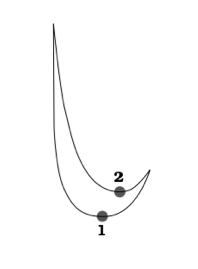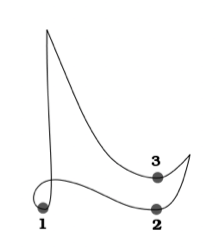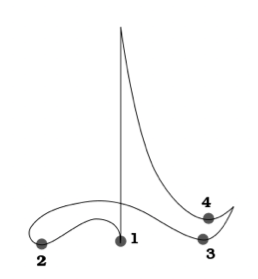2.6: Conducting
- Page ID
- 72358
Introduction

Conducting is the art of directing a musical performance, such as a concert, by way of visible gestures with the hands, arms, face and head. The primary duties of the conductor are to unify performers, set the tempo, execute clear preparations and beats (meter), and to listen critically and shape the sound of the ensemble.Communication is non-verbal during a performance, however in rehearsal frequent interruptions allow the conductor to give verbal directions as to how the music should be played or sung.
Conductors act as guides to the orchestras and/or choirs they conduct. They choose the works to be performed and study their scores to which they may make certain adjustments, work out their interpretation, and relay their vision to the performers. They may also attend to organizational matters, such as scheduling rehearsals. Orchestras,choirs, concert bands and other sizable musical ensembles such as big bands are usually led by conductors.
Please watch the following short video about conducting with simple meters. Remember that, in simple meters, each beat can be divided into two equal parts.
The Movements of Conducting
Duple Meter
Examples of duple meter are 2/4, 2/2, or fast 6/8 time. A conductor would sweep out a J-shaped arc to conduct duple meter:

Triple Meter
Examples of triple meter are 3/4 or 3/2. A conductor would sweep out a triangular arc to conduct triple meters.

Quadruple Meter
Example of quadruple meter are 4/4, 4/2, or 4/8. A conductor would sweep out an upside-down T shape to conduct quadruple meter.

Watch the following video. Does Gustavo Dudamel (the conductor) always draw the 4/4 pattern?
Slow, 6/8 Time
When conducting 6/8 time, the conductor will sweep out an upside-down T , bouncing along the bottom to each beat.
Listen: Do-It-Yourself Conducting
Listen to and conduct the samples in this link.
Syncopation
In music, syncopation involves a variety of rhythms which are in some way unexpected which make part or all of a tune or piece of music off-beat. More simply, syncopation is a general term for “a disturbance or interruption of the regular flow of rhythm”: a “placement of rhythmic stresses or accents where they wouldn’t normally occur.”
Listen: Syncopation
In this example you will hear syncopation—notes that are played “off the beat.”
Contributors and Attributions
- Revision and adaptation. Provided by: Lumen Learning and Natalia Kuznetsova. License: CC BY-SA: Attribution-ShareAlike
- Provided by: Wikipedia. Located at: https://en.Wikipedia.org/wiki/Conducting. License: CC BY-SA: Attribution-ShareAlike
- Kensington Conductor Mural. Authored by: wiredforlego. Located at: https://www.flickr.com/photos/wiredforsound23/14615664692/. License: CC BY-NC: Attribution-NonCommercial
- #3-Simple Meters: Conducting Tip with Michelle Willis. Authored by: Michelle Willis. Located at: https://www.youtube.com/watch?v=79Pk-33R2HM. License: All Rights Reserved. License Terms: Standard YouTube License


